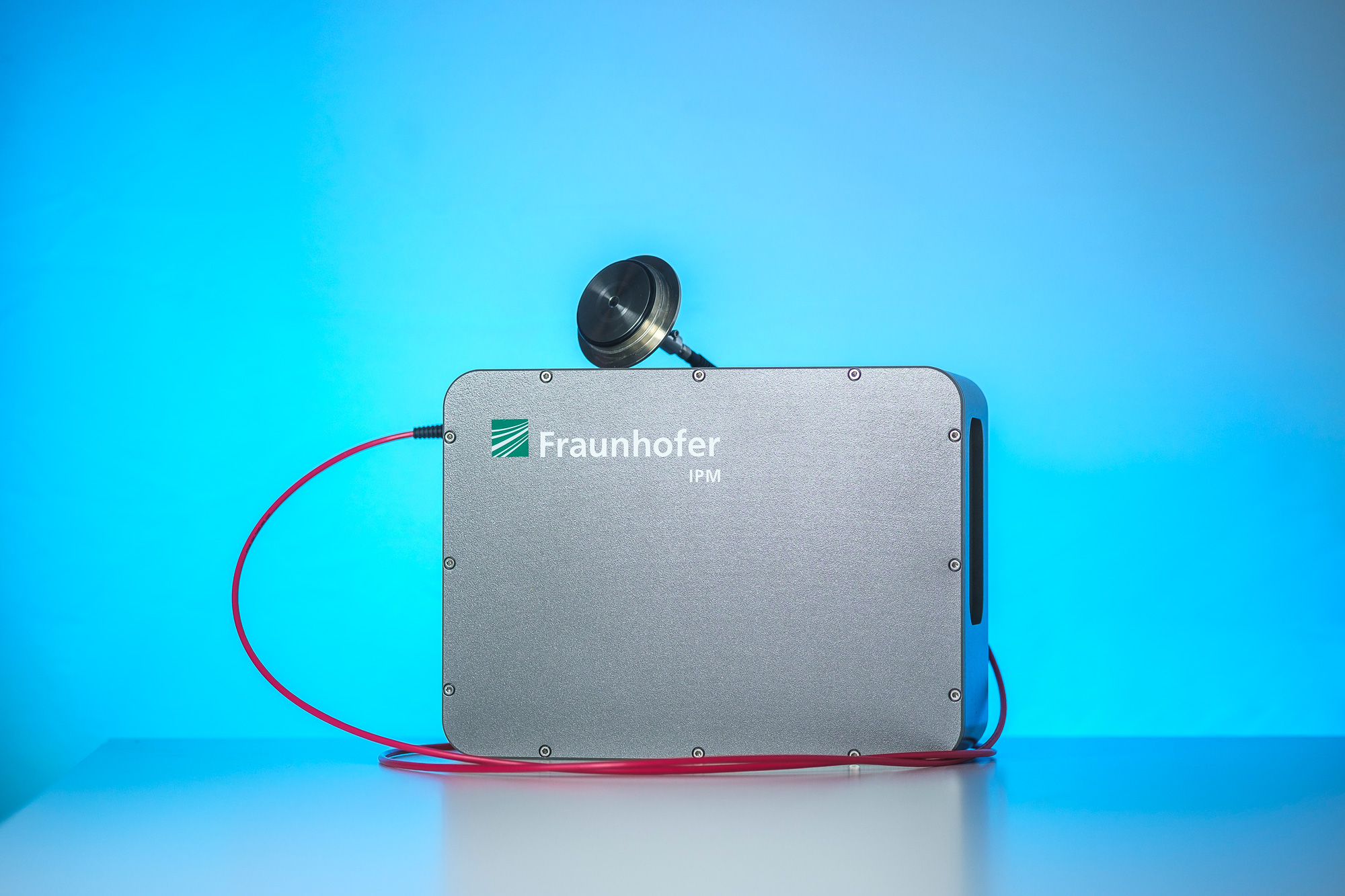Food production
Fiber-based sensor for demand-based cleaning of closed food processing systems
In the food processing industry, closed production systems are cleaned according to strictly defined specifications – and often applying unnecessarily large quantities of chemicals. A fiber-optical fluorescence sensor developed at Fraunhofer IPM measures deposits in closed containers in a minimally invasive manner, thus enabling cleaning processes to be controlled and adapted to the actual degree of fouling.

In the food processing industry, high hygiene requirements apply. The cleaning of production facilities must be completely reliable in order to guarantee the safety of food products. For closed containers or pipes in which, for example, milk, beer, or juices are stored or transported, fixed cleaning routines apply. „The more, the better“ is the general rule in this case: cleaning agents, water, energy, as well as the cleaning time are very generously calculated in order to comply with the strict quality regulations. This safety margin is not only ecologically questionable but also economically unfavorable, because it causes unnecessary delays in the production process.
Minimally invasive: Millimeter-fine sensor tip detects actual contamination
The „F-Fiber“ sensor developed at Fraunhofer IPM makes it possible to adapt the cleaning of closed vessels, known as Cleaning in Place (CIP), to the actual degree of contamination. F-Fiber consists of an optical fiber measuring one millimeter in diameter, which is embedded in a stainless-steel ferrule. The fiber tip is integrated directly into the container wall of a food tank or food-conveying pipe. Alternatively, it can be attached to an existing connector using a flange. All further hardware components of the measuring system are located outside the production unit and are connected via the fiber.
At the inner wall of the tank or tube, the fiber tip is flushed by the tank or tube content. Over time, molecules accumulate on the sensor tip as well as on the surrounding tank wall, forming an unwanted deposit. The organic deposit emits fluorescence when excited with UV light via the sensor fiber. The emitted fluorescence is guided back onto a highly sensitive detector via the same fiber and evaluated. From the strength of the fluorescence signal, conclusions can be drawn about the degree of fouling. Based on these measured values, the cleaning process can be triggered and adjusted in real time – and this is possible for many different types of food soil that can even occur during the same production process.
F-Fiber at “drinktec” trade fair
Fraunhofer IPM will be presenting the F-Fiber sensor at the “drinktec” trade fair for the beverage and liquid food industry from September 12 to 16 in Munich. Meet us at the VDMA (German Engineering Federation) joint booth in Hall B3 (336)
Further informationen
The F-Fiber sensor was developed as part of the SensoRein project (sensor-based monitoring of cleaning requirements and cleaning results in closed systems). The project was funded by the German Federal Ministry of Food and Agriculture (BMEL) and coordinated by the German Engineering Federation (VDMA).